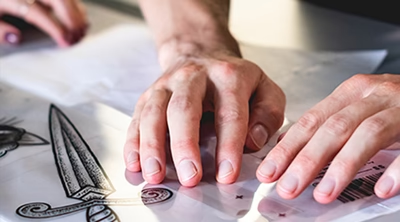The Fundamentals of Mixing Emulsion and Coating a Screen
Screen printing is fantastic; you can print your designs. However, you need to learn it first. Though it seems easy at first, it is not. You must know about the best screen printing emulsion, mixing emulsions, and coating a screen.
Each emulsion responds differently when coating; thus, you need to adjust speed and pressure. How many adjustments you have to make depends upon the thickness of the emulsion and the mesh you are using.
So, if you are blank about screen printing and want to master this art, you have landed at the right place. This article will help you learn the fundamentals of mixing emulsion and coating a screen. Read on to know more!
Steps to Mixing Emulsion
First, you must understand the difference between the emulsions and select the best one. Once you choose the best screen printing emulsion, depending on your darkroom setup, you can start mixing emulsion. Suppose you have chosen dual-cure emulsion; the steps to mixing this emulsion are as follows:-
- Get a bottle of distilled water and a stir stick.
- Wait until the distilled water reaches room temperature.
- Use distilled water to fill the diazo bottle to the fill line.
- Close the bottle and shake well for thirty seconds.
- Ensure the diazo has dissolved in the water.
- Pour it into the bucket of emulsion.
- Slowly mix up using a stir stick.
- Keep stirring until the diazo is mixed thoroughly with the emulsion.
- Do this process slowly to keep maximum air out of the mixture.
- Clean the bucket, close the lid, and store it in a cool, dry place.
After successfully mixing an emulsion, you are ready to coat a screen. The shelf life of an activated diazo emulsion is 3-5 weeks, so ensure you use it within this time window.
It’s Time to Coat a Screen
Though coating a screen could be rugged for a newbie, one can master it with some practice. The tools required to coat a screen include a scoop coater. Once you get it, you are ready to go.
Technique
While you coat a screen, you can put pressure on the front of the scoop coater or back. Putting pressure on the show affects the emulsion pushed through the mesh and cut. On the other hand, if you put pressure on the back, it will cut more.
Coating a Screen
Coat a screen with pressure on the scoop coater's front and back. Start coating at an angle and slowly straighten up a screen upright when you finish. Ensure you apply two coats on the side that touches the garment. Put it in the drying rack.
In Conclusion
Screen printing can be cumbersome; however, you can master it with practice. So, if you plan on learning screen printing, read this guide to mixing and coating a screen. Then, you can continue further. While you screen print, ensure you use the best screen printing emulsion; choose a water-based emulsion if you are undecided. For more write-ups on screen printing, keep following Screen Print Direct.


.webp)


Comments
Post a Comment